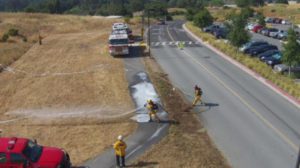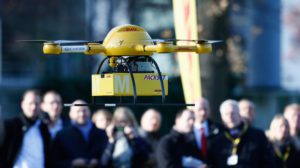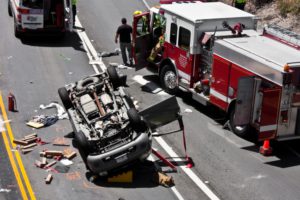Drones are more than sophisticated toys. Modern society continues to discover more uses for drones and drone technology is driving this growing discovery process. Combining artificial intelligence (AI) with drones opens up an array of new uses and improved methods of how we currently employ drones in a variety of fields and industries.
An Overview of AI Data Collection
Any use of AI and machine learning requires data. This data must be collected before it can be put to use. But it’s not enough to just harvest immense loads of random data. Intelligent data collection requires a reason for collecting data and targeted sources from which to obtain it.
Raw data is then collected, collated, labeled, ingested by machine learning algorithms, and then aggregated for specific uses. More data fed to machine learning systems enables them to create usable outputs like pattern recognition, inferences and predictions, consumer activity, and even new product development.
How Can Drones Collect Information?
Drones are powerful tools for data collection because of their versatility. Basically, they can go where people cannot. They can operate faster, higher, in dangerous environments, and even in various weather conditions. Plus, coupled with AI, smart drones can operate almost independently and harvest data to feed machine learning that increases their potential.
How do drones collect data?
- Images and video: aerial photography and video capture stunningly accurate and high-definition images that can reveal much about the targeted area or items.
- Sound and thermal sensors: drones can be equipped to detect audible and infrared signals, making them prime tools for search and rescue.
- GPS and radar positioning: drones equipped with these technologies are not only harder to lose, they can report precise locations during surveillance, mapping, or other spatial exploration missions.
Drones equipped with AI can feed this critical information back to ground stations in real time for on-site decision making or later study.
Practical Applications for Drones Equipped with Artificial Intelligence
Drones equipped with artificial intelligence (AI) represent a powerful convergence of technologies, and their synergy leads to numerous applications across various domains. Let’s review several ways drones can be important for AI and machine learning.
- Data Collection and Analysis — Real-time surveillance for foliage overgrowth of transmission and distribution lines, environmental monitoring of climate, pollution, wildlife, etc., and analyzing agricultural conditions to inform precision farming.
- Search and Rescue Operations — Utilizing AI algorithms to locate missing persons or disaster survivors efficiently.
Infrastructure Inspection and Maintenance — Automated inspection of bridges, pipelines, power lines, and more, reducing human risk and improving efficiency. - Transportation and Delivery — Providing last-mile delivery services, especially in remote or densely populated areas, and assisting delivering emergency medical supplies.
- Healthcare — Rapid response in emergencies like heart attacks by delivering defibrillators or monitoring public health by analyzing environmental factors.
- Military and Defense Applications — Intelligent surveillance, targeting, and reconnaissance.
- Disaster Management — Assessing damage after natural disasters and guiding first responders to affected areas.
- Entertainment and Media — Film and photography enhancement through intelligent tracking and stabilization and broadcasting live events.
- Mapping and Surveying — Creating detailed 3D maps of terrain and structures and assisting in archaeological studies.
- Scientific Research — Studying hard-to-reach areas such as volcanic regions or deep-sea environments.
- Weather Forecasting — Collecting atmospheric data to improve weather prediction models.
- Communication — Providing temporary communication networks in remote or disaster-stricken areas.
- Urban Planning and Development — Assisting in the planning of cities by providing detailed topographical and infrastructural data.
- Traffic Monitoring and Management — Analyzing real-time traffic patterns to reduce congestion and improve flow.
- Education and Training — Used as a tool to teach AI, robotics, and other STEM subjects.
- Retail and Customer Service — Offering personalized marketing through analysis and interaction with customers in public spaces.
- Tourism — Guiding tourists or providing unique perspectives on attractions.
- Law Enforcement — Assisting police with crowd control, crime scene analysis, and suspect tracking.
- Marine Exploration — Utilizing underwater drones for oceanographic research and exploration.
- Customization and Personalization — Creating tailored drone services or functionalities based on individual or industry-specific needs.
- Assistive Technology for Disabled Individuals — Helping physically disabled individuals with tasks and mobility.
- Integration with IoT (Internet of Things) — Enhancing Smart City initiatives through real-time data collection and communication with other IoT devices.
- Ethical and Regulatory Compliance — Ensuring adherence to laws and ethical guidelines through intelligent monitoring and control.
Integrating AI with drones opens a myriad of possibilities that span across virtually every industry. It’s driving efficiency, safety, innovation, and is likely to be an essential component in the technological landscape of the future.
How can 1UP Aerial Drone Services help you adopt drones and AI to increase efficiency, productivity, safety, and profitability in your business? Contact us today to learn more!


